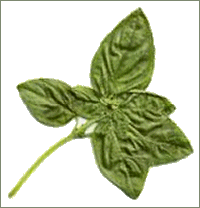The 6 Healthiest Staple Foods in Italian Cuisine
by www.SixWise.com
Italian cuisine is far more complex than the pizza, pasta and lasagna for which
it's famous in America. In fact, depending on the region -- Rome, Tuscany, Sicily,
etc. -- you may find polenta or risotto instead of pasta, lamb instead of seafood
or flatbread vs. thicker-crust pizza.
Also, in stark contrast to America, in Italy meals are a lengthy process, meant
to be savored (though more fast-food restaurants are creeping in to the bigger
cities). A typical Italian meal would start with antipasto and be followed by
a pasta course (or polenta, risotto or soup), then a meat, seafood or vegetable
dish. Next may come a salad, a fruit and cheese course, and a sweet dessert.
Trying some healthy Italian favorites in your own kitchen does not have to
be complicated, though. Check out these six Italian staple foods below -- some
of the healthiest foods on their menus -- then try your hand at the tasty recipes
below.
 1.
Tomatoes
1.
Tomatoes
Whether in sauce or soups, sun-dried or fresh, tomatoes are a mainstay of Italian
cooking. This was not always the case, though. Since tomatoes are a part of
the nightshade family, people once thought they were poisonous and kept
them strictly for decoration purposes in their gardens. It wasn't until the
16th century that tomatoes became a food source in Europe and Italy.
Health Benefits: Aside from being rich in vitamins C, A and K, tomatoes
contain lycopene, a carotenoid with potent antioxidant and cancer-fighting properties.
Lycopene protects cells from oxygen damage, fights colorectal, prostate, breast,
endometrial, lung, and pancreatic cancers, and reduces your risk of heart disease.
Studies have found that the synergy between phytonutrients and lycopene in
tomatoes, rather than an isolated nutrient, is what's responsible for their
benefits.
Cooked tomatoes are a more concentrated source of lycopene than raw ones, and
lycopene is better absorbed when they're cooked with a little oil, making Italian
sauces an ideal source.
 2.
Oregano
2.
Oregano
This herb is used in Italian sauces, soups, pizzas and vegetables, either fresh
or dried, for its warm, intense and aromatic flavor.
Health Benefits: Two compounds in oregano, thymol and carvacrol, have
potent antibacterial properties. The herb is also a potent antioxidant, rich
in phytonutrients. On a per gram basis, fresh oregano has:
- 42 times more antioxidant activity than apples
- 30 times more than potatoes
- 12 times more than oranges
- 4 times more than blueberries
 3.
Garlic
3.
Garlic
Garlic is used in many Italian dishes (but, as a relief to those non-garlic
fans out there, not all). You may find it sliced on pizza, cooked in sauces,
rubbed onto bread, or served as marinated whole cloves with olives.
Health Benefits: Garlic, a member of the onion family, has many potent
health-promoting properties. Many of these benefits (and its characteristic
smell) stem from its sulfur-containing compounds, such as allicin. Garlic has
been found to:
- Lower blood pressure
- Lower LDL (bad) cholesterol
- Prevent atherosclerosis
- Reduce the risk of heart attack and stroke
- Be antibacterial, antiviral and anti-inflammatory
- Act as a potent antibiotic
- Fight cancer
- Protect against the side effects of diabetes
- Help prevent weight gain
- Provide antioxidant protection
 4.
Olives and Olive Oil
4.
Olives and Olive Oil
Olives are one of the oldest foods known, and it's thought that they've been
used for food for some 7,000 years. Whole olives are used in many cooked Italian
dishes, salads and antipasto, and olive oil is a part of just about every meal.
Italian olive oils have been compared to fine wines in the number of different
varieties and flavors they represent.
Confused about olive oil grades? Extra virgin is the unrefined oil from the
first pressing, and usually indicates a higher quality oil than virgin olive
oil.
Health Benefits: Olives contain healthy monounsaturated fatty acids
that have been found to reduce the risk of atherosclerosis and increase HDL
(good) cholesterol.
Olives and olive oil also contain antioxidants, polyphenols, flavonoids and
vitamin E. This combination has been found to help fight colon cancer and heart
disease, as well as reduce inflammation.
 5.
Artichokes
5.
Artichokes
Artichokes are much more common in Italian cuisine than they are in America,
and with good reason. Artichokes can be stuffed, steamed, served with sauce
or with pasta, and eaten with salads, all with a unique flavor.
The artichoke is actually the unopened flower from a thistle-like plant. Typically,
only the fleshy, tender portion at the bottom of each leaf is eaten, along with
the heart of the artichoke, which is considered a delicacy (you can buy canned
artichoke hearts as well).
The variety of artichoke common to Italian foods is the globe artichoke or
the baby artichoke. (The Jerusalem artichoke is actually not an artichoke.)
Health Benefits: Artichokes are an excellent source of magnesium, folic
acid, fiber and vitamin C.
 6.
Basil
6.
Basil
Basil is an important part of pesto, a favorite Italian sauce of basil, parmesan
cheese, pine nuts, olive oil and garlic, usually served with pasta, but basil
is also used as a flavor-enhancing herb in many other Italian dishes.
Health Benefits: Basil contains flavonoids that protect cells from radiation
and oxidative
damage. It also contains potent volatile oils that are anti-bacterial and
effective at warding off unwanted bacteria, as well as contain anti-inflammatory
properties. Basil is also a good source of iron, calcium and vitamin A.
Tasty Italian Recipes to Try Out Tonight
Pesto Sauce
3 Cups Loosely Packed Fresh Basil
3 Tablespoons Pine Nuts, Lightly Toasted in the Oven
2 Cloves of Garlic
3/4 Cup Extra-Virgin Olive Oil
1/4 Cup Freshly Grated Parmesan Cheese
Salt to Taste
- Place basil, nuts, garlic and salt in the food processor, and process
1 minute.
- Slowly start pouring in the olive oil until you reach the desired consistency.
- Add the cheese, and mix well.
Makes about 1 1/2 cups of pesto.
Source: Deborah Mele, Italian
Food Forever
Artichokes in Tomato Sauce
8 Medium Artichokes
1 Medium Onion
Salt & Pepper
2 Garlic Cloves, Minced
3 Tablespoons Olive Oil
1 (28 oz) Can Chopped Tomatoes
1/2 Cup Fresh Parsley, Chopped
- Clean the artichokes by removing the tough outer leaves and stem, ensuring
a flat bottom to enable them to sit upright in a pot.
- Cut off about 1/3 from the top, and remove the prickly choke from inside.
- Place the cleaned artichoke immediately in a bowl of water with a little
lemon juice to prevent discoloration.
- Cut the artichokes into wedges and leave in the lemon water until ready
to use.
- Sauté the onion and garlic in the oil until translucent.
- Add the tomatoes, and simmer for about 10 minutes.
- Drain the artichokes and add these to the tomato sauce.
- Season with salt and pepper, and cook for about 45 minutes or until the
artichokes are fork tender.
- If the sauce becomes too thick, add a little water as needed. Serve warm
or at room temperature with the fresh parsley sprinkled on top.
Source: Deborah Mele, Italian
Food Forever
Recommended Reading
Salt: What You Really Need to Know About the Harmful & Healthful Effects of Sodium
The 8 Top Dietary Mistakes Healthy Eaters Make
Sources
The World's Healthiest Foods
WholeHealth MD Reference Library